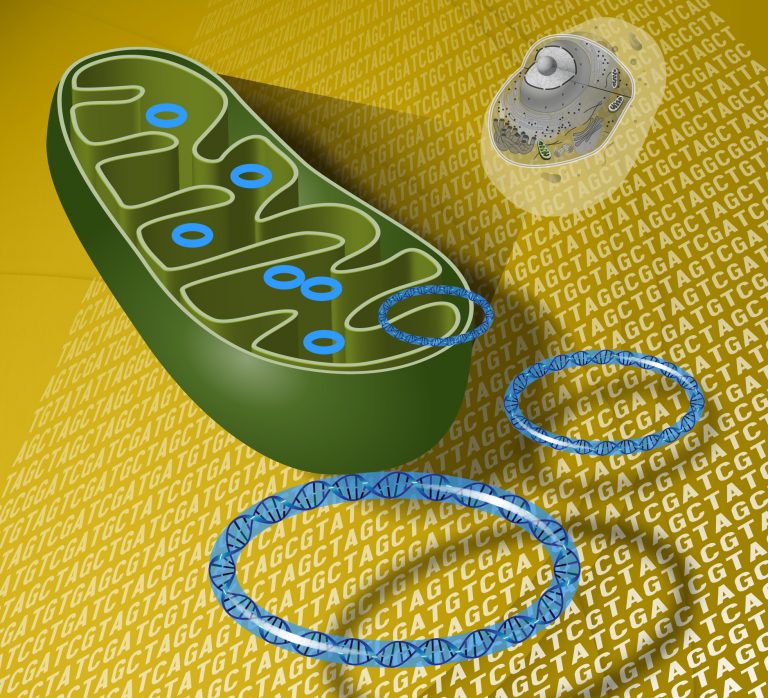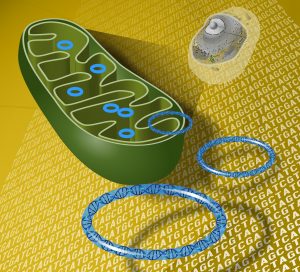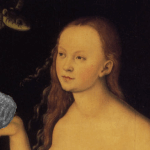
The mitochondrion and its small circular chromosome, mitochondrial DNA.
Photo by Darryl Leja, NHGRI, Creative Commons Attribution 2.0 Generic license
Table of Contents
The alphaproteobacteria have been widely cited as the closest relative– and possibly the prokaryotic ancestor — of the powerhouse organelles of the eukaryotic cell, the mitochondria. A team of researchers from Uppsala University in Sweden aimed to identify its prokaryotic ancestral origin. However, their recent findings seemed to contradict this notion.1 The mitochondria may have taken an evolutionary fate that is quite different from the one previously thought. Debates on the endosymbiotic theory remain fierce.
Mitochondria, the cell’s powerhouse
The mitochondria are best known as the powerhouse of eukaryotic cells. Through cellular respiration, the mitochondrion (single form of the plural, mitochondria) is the organelle responsible for generating and supplying energy (e.g. adenosine triphosphate) needed in various metabolic activities of the cell. It is semi-autonomous as it has its own genome. Referred to as mitochondrial DNA, the genetic material contained in the mitochondrion enables the manufacturing of its own RNAs and proteins. The genome of the mitochondrion is distinct from the nuclear genome and this paved the idea that this organelle is possibly derived from a prokaryote through endosymbiosis (endosymbiotic theory).
Mitochondria and the endosymbiotic theory
An endosymbiosis is a form of symbiosis wherein the endosymbiont lives within the body of its host. In terms of evolution, endosymbiosis was used as a basis of the origin of semi-autonomic organelles, such as mitochondria. Referred to as the Endosymbiotic theory, this theory suggests that mitochondria within the eukaryotic cell came about as a result of early endosymbiosis between prokaryotic endosymbionts and the eukaryotic host cell. The proponents of this theory posited that the mitochondria arose from the prokaryotes (particularly, alphaproteobacteria). One of the proofs raised is based upon the ability of the mitochondria to reproduce via a process similar to the prokaryotic binary fission. Another is the mitochondrial DNA being more akin to the prokaryotic genome (as a single circular DNA) than the nuclear genome.2
Ancestral endosymbiont of the mitochondria
To lay further evidence to the endosymbiotic theory, the research team from Uppsala University in Sweden aimed to uncover the identity of the mitochondrial ancestor. They analyzed large amounts of environmental sequencing data from the Pacific and the Atlantic Ocean and found several species that had not yet been identified. They were able to reconstruct the genomes of over 40 alphaproteobacteria.1 These bacteria include the Rickettsiales group, which is commonly cited as the closest relative among other alphaproteobacteria based on genomic studies 3, and possibly where the mitochondria originated from. Also, the Rickettsiales is a group of parasitic prokaryotes. As such, they depend highly on their host cell to survive. However, the Uppsala University research team was unable to pinpoint the mitochondrial ancestor from their recent analyses on the present-day alphaproteobacteria, including Rickettsiales. And based on what their current data suggest, the evolutionary position of the mitochondria would lie outside of the alphaproteobacteria. This means that this group is not the closest relative, and the ancestor from where the mitochondria evolved could have also given rise to the presently-identified alphaproteobacteria.1
Laying a firm basis for the endosymbiotic theory remains a challenging feat at this time. Nevertheless, we cannot simply rest the case just because the new data said otherwise. Researchers should not be disheartened in finding more decisive and fully comprehensive evidence as to the ancestral origin of the mitochondria. Reaching a consensus may still be far off. However, a disparity in evidence-based viewpoints is better than a clash of unfounded words.
— written by Maria Victoria Gonzaga
References
1 Uppsala University. (2018, April 25). “Redefining the origin of the cellular powerhouse”. ScienceDaily. Retrieved from www.sciencedaily.com/releases/2018/04/180425131841.htm
2 “Endosymbiotic theory”. (n.d.). Biologyonline.com. Retrieved from https://www.biologyonline.com/dictionary/endosymbiotic-theory
3 Andersson, S. G., Zomorodipour, A., Andersson, J. O., Sicheritz-Pontén, T., Alsmark, U. C., Podowski, R. M., Näslund, A. K., Eriksson, A. S., Winkler, H. H., and Kurland, C. G. (1998). “The genome sequence of Rickettsia prowazekii and the origin of mitochondria”. Nature 396 (6707): 133–140. doi:10.1038/24094

